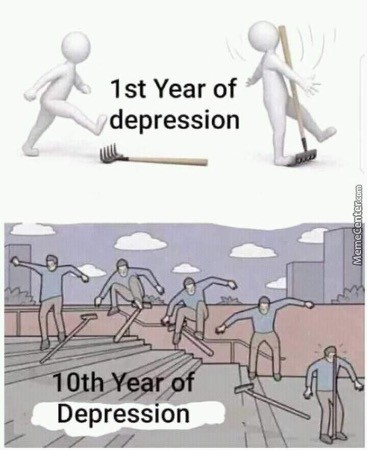Depression. It’s a word thrown around, but what does it truly mean to be depressed? This isn’t a clinical definition, but rather a brutally honest guide to navigating the often-misunderstood landscape of depression, offering insight into its multifaceted nature and the challenges of seeking help. This guide isn’t about glorifying or romanticizing depression; it’s about acknowledging its reality and offering a perspective for those experiencing it and those supporting them.
What Does Depression Look Like? The Mask of “Normal”
Depression often wears a mask of normalcy. Outwardly, everything may seem fine. The affected individual might be high-functioning, attending social events, and maintaining a seemingly ordinary routine. However, this facade can be a defense mechanism, a way to cope with societal expectations. Honesty about the internal struggle can be met with discomfort or misunderstanding. The classic “How are you?” can be a minefield. The truthful answer – a detailed account of listlessness, existential dread, and a profound lack of motivation – is rarely socially acceptable.
“Hey, how’re you doing? Good weekend?”
“Well, I spent a good portion of it laying on the sofa staring into space feeling a sense of boredom so incredibly powerful it was almost interesting, lacking the energy or will to do anything.
Then, to mix things up, I enjoyed a good few hours of feeling sad for no reason, seasoned with a sprinkling of self-loathing for not having a good reason to feel sad. Later, I ate a whole chorizo and a wheel of cheese.”
“Oh…err…”
“Sorry, I may have misinterpreted the social cues here. Yeah, not too bad, you?”
Fortunately, the stigma surrounding mental health is slowly diminishing. Open conversations are becoming more commonplace, and more individuals are willing to share their experiences. This shift allows for greater understanding and empathy. Resources like the MIND website provide valuable information on recognizing the signs of depression in others.
What Does Depression Feel Like? Beyond Sadness
While sadness is often associated with depression, it’s not the only, or even the most common, feeling. Depression manifests differently in everyone. Some may experience overwhelming sadness, while others feel a profound sense of emptiness, an inability to feel anything at all. This emotional numbness can be particularly isolating.
The insidious nature of depression lies in its ability to gradually erode one’s capacity for joy and interest. Things that once brought pleasure become meaningless. Hobbies are abandoned, relationships suffer, and the world loses its color. This isn’t a conscious choice; it’s a symptom of the illness.
The loss of a loved one can trigger or exacerbate depression, but the reaction to grief can be distorted. Instead of the expected sadness, a depressed person might feel…boredom. This disconnect between expected emotions and actual feelings can lead to intense self-loathing.
Depression can strip the meaning from everything: family, work, hobbies, replacing them with a void filled with sadness, boredom, or nothingness. This can lead to feeling like one doesn’t want to do anything, doesn’t want to be anything, doesn’t want to be at all. Not necessarily wanting to die, but simply wanting to have never existed.
Seeking Help: Navigating the Labyrinth
The act of seeking help for depression is often a Herculean task. Summoning the introspection to recognize the need for assistance and then finding the willpower to pursue it requires immense effort. The irony is that navigating the mental health services landscape is most difficult when one is least equipped to do so.
The process can be incredibly frustrating. Mental health services often seem designed to discourage access, with long waitlists, complex procedures, and a general lack of readily available support. This is where a supportive workplace or community can make a significant difference, providing guidance and advocacy.
Even in systems with “Improving Access to Psychological Therapies” (IAPT), wait times can stretch for months, and access to a consistent GP can be equally delayed. Reaching out for help is an act of courage, a marathon in itself, and deserves recognition.
The Reality of Treatment: A Rollercoaster of Experiences
Experiences with mental health treatment vary widely. Some individuals find immediate relief and support, while others face a long and arduous journey. Medication, therapy, and lifestyle changes are all potential components of a treatment plan, but finding the right combination can take time and experimentation.
Medication can be helpful in dampening symptoms, but it doesn’t address the underlying thoughts and feelings. In some cases, medication can even have unintended consequences, such as providing the energy to act on suicidal thoughts. It’s crucial to remain vigilant and communicate openly with healthcare providers about any changes in mood or behavior.
Cognitive Behavioral Therapy (CBT) can be a valuable tool in identifying and changing negative thought patterns. However, finding a therapist who resonates with you on a personal level is essential.
The road to recovery is often filled with setbacks. Medications may not work, side effects can be intolerable, and the healthcare system can be difficult to navigate. Relapses are common, requiring individuals to repeat the challenging process of seeking help.
Concluding Thoughts: Holding On, Reaching Out
The journey with depression is often a long and complex one. There’s so much more to say, from the struggle to understand how to interact with people in ‘normal’ situations, to the profound distaste for the term ‘low mood’, and the constant annoyance of filling out unhelpful and non-nuanced forms.
Even after years of treatment, individuals may still face challenges. Relearning how to deal with feelings previously masked by medication can be difficult. Dark humor can be a coping mechanism, but it’s not always understood by others.
Despite the challenges, it’s important to remember that things can get better. Even if you can’t see your value, I guarantee others do. If you’re struggling with mental health, reach out. Speak with a mental health professional, a trusted friend, or a family member. You are not alone.

